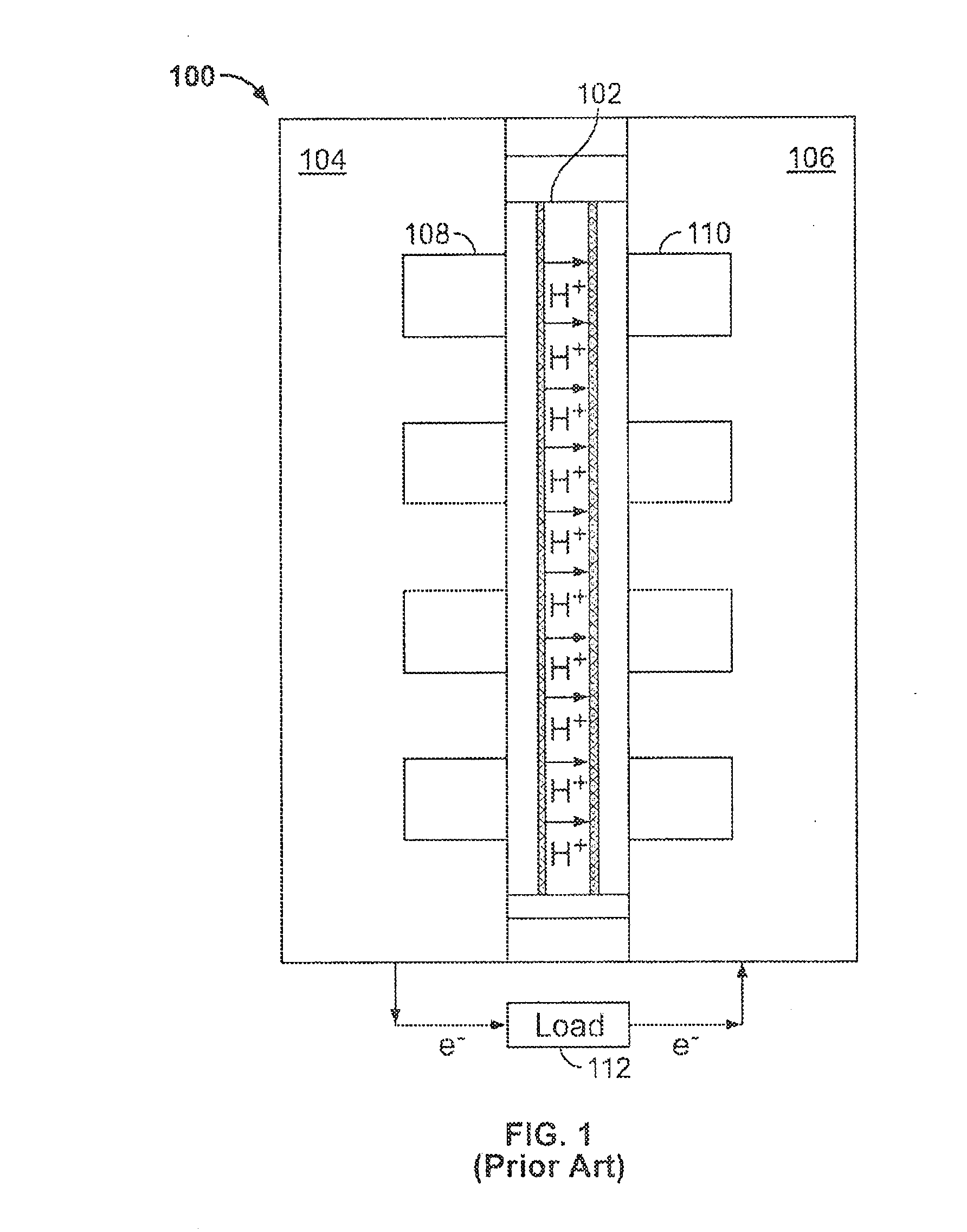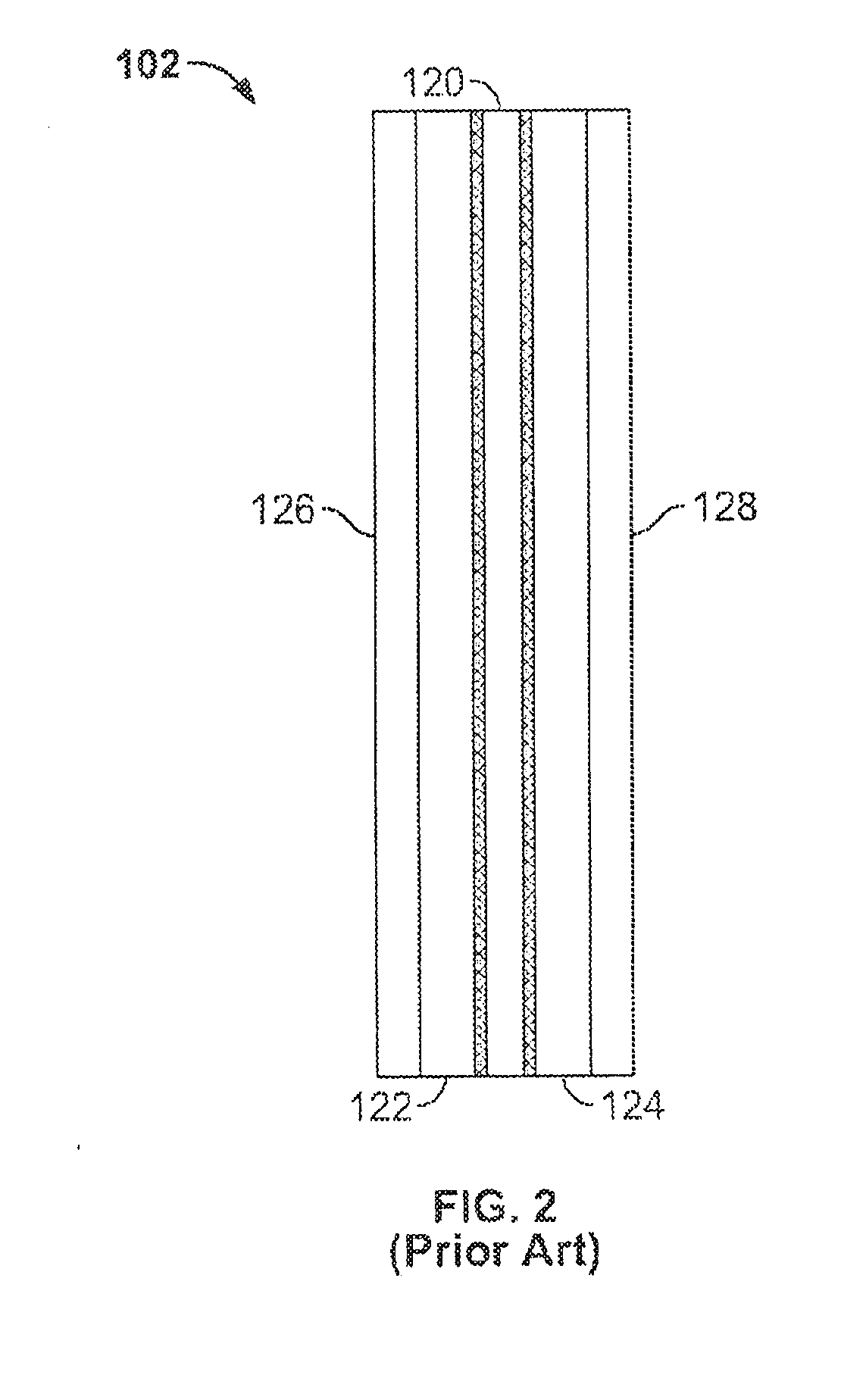Fuel cell apparatus and method of fabrication
a fuel cell and apparatus technology, applied in the field of fuel cells, can solve the problems of insufficient power generation for inadequately short duration, unwieldy power sources currently employed in mobile devices, and insufficient renewable power sources for low-power devices, etc., and achieve the effect of cost-effective production and distribution and easy manufacturing
- Summary
- Abstract
- Description
- Claims
- Application Information
AI Technical Summary
Benefits of technology
Problems solved by technology
Method used
Image
Examples
Embodiment Construction
[0037]FIG. 6 illustrates schematically a design of a fuel cell stack 200 according to one embodiment of the present invention. The fuel cell stack 200 includes an anode end plate 202, a cathode end plate 204, two membrane electrode assemblies 206 and 208, and a bipolar plate 210. Opposite surfaces 212 and 214 of the MEA 206 are flush with conductive surfaces of the anode end plate 202 and the bipolar plate 210, respectively. Opposite surfaces 216 and 218 of the MEA 208 are flush with conductive surfaces of the cathode end plate 204 and the bipolar plate 210, respectively. (number).
[0038]FIG. 7 illustrates a 4-channel in-plane conductive composite end plate 230 in accordance with one embodiment of the present invention. FIG. 7A provides a cross-sectional (side profile) schematic diagram of the 4-channel in-plane conductive composite end plate 230 of FIG. 7. As will be appreciated, the end plate 230 represents one possible generic configuration for both anode and cathode end plates su...
PUM
| Property | Measurement | Unit |
|---|---|---|
| thickness | aaaaa | aaaaa |
| operating temperature | aaaaa | aaaaa |
| thickness | aaaaa | aaaaa |
Abstract
Description
Claims
Application Information
 Login to View More
Login to View More - R&D
- Intellectual Property
- Life Sciences
- Materials
- Tech Scout
- Unparalleled Data Quality
- Higher Quality Content
- 60% Fewer Hallucinations
Browse by: Latest US Patents, China's latest patents, Technical Efficacy Thesaurus, Application Domain, Technology Topic, Popular Technical Reports.
© 2025 PatSnap. All rights reserved.Legal|Privacy policy|Modern Slavery Act Transparency Statement|Sitemap|About US| Contact US: help@patsnap.com



